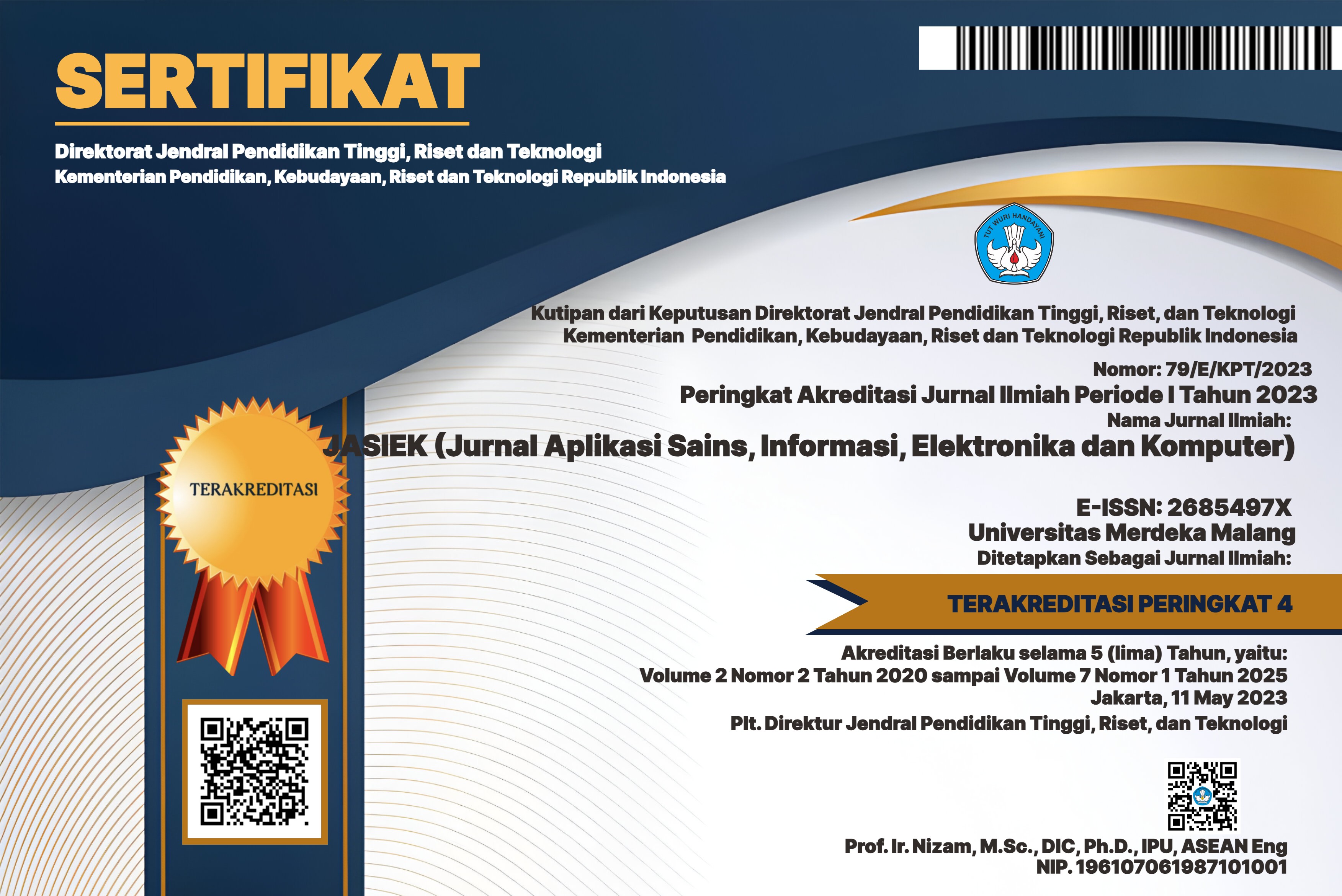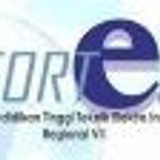Penyusunan Model Enterprise Arsitektur Data, Aplikasi, dan Infrastruktur Teknologi Layanan IT Support Perguruan Tinggi Menggunakan Metode Enterprise Architecture Planning (EAP)
DOI:
https://doi.org/10.26905/jasiek.v5i1.9545Keywords:
EA, EAP, EA MatrixAbstract
Enterprise Architecture (EA) is an enterprise architecture modeling to assist management in managing utilization and development of Information Systems/Information Technology (IS/IT). ITTP in the utilization and development of IS/IT to fulfill its academic services, there is an Information Systems and Technology (STI) unit as the manager of service utilization and development. The problem with the STI ITTP service unit is that there is no IS/IT enterprise architecture model to support the development of its services. The solution to this problem requires an information and communication technology enterprise architecture model covering business processes, data, applications and technology infrastructure to be more organized using the Enterprise Architecture Planning (EAP) method. The results of this study are compiling the Architectural matrix that exists in the ITTP STI unit services in the form of business processes, data, applications and technology infrastructure, with research material data obtained from interviews and observations on the ITTP STI unit. The preparation of the matrix can later help the quality of the role of managing the utilization and development of IS/IT as expected by the STI ITTP unit.
Downloads
References
F. Fatoni, E. Supratman, and D. Antoni, “Arsitektur Sistem Informasi Akademik Perguruan Tinggi Swasta Menggunakan EAP,†Jurnal Sisfokom (Sistem Informasi dan Komputer), vol. 10, no. 1, pp. 59–70, 2021.
S. M. Putri, U. Hayati, and R. Dzulkarnaen, “Perancangan Arsitektur Electronic Medical Record (EMR) Menggunakan Metode Enterprise Architecture Planning (EAP) Arsitektur Enterprise,†Journal of Information Technology, vol. 2, no. 1, pp. 25–30, 2020.
E. L. Silalahi, M. Butarbutar, Z. Sihombing, and N. Ginting, “THE IMPACT OF PRICE, SERVICES, QUALITY OF SERVICES AND PRODUCTS TOWARD PURCHASING DECISION OF CUSTOMERS IN PT. NUSIRA MEDAN,†International Journal of Economics, Business and Accounting Research (IJEBAR), vol. 5, no. 2, 2021.
M. Sagita, “Khairunnisa.(2019). JSH, Vol. 2 No. 2, Desember 2019,†Jurnal Sosial Humaniora, vol. 2, no. 2, pp. 1–7.
“Visi Misi ITTP – Institut Teknologi Telkom Purwokerto.†https://ittelkom-pwt.ac.id/visimisi-ittp/ (accessed Jun. 05, 2023).
M. Hanafi, A. Primadewi, and S. Sunarni, “Pemodelan Arsitektur Data pada Perguruan Tinggi (Studi Kasus : UMMagelang),†Jurnal RESTI (Rekayasa Sistem dan Teknologi Informasi), vol. 2, no. 1, pp. 337–344, Apr. 2018, doi: 10.29207/RESTI.V2I1.297.
M. Tajuddin and A. B. Maulachela, “INTEGRASI DAN INTERPOERABILITAS PETA JALAN SISTEM PEMERINTAHAN BERBASIS ELEKTRONIK (SPBE) MENGGUNAKAN FEDERAL ENTERPRISE ARCHITECTURE FRAMEWORK (FEAF) METHOD,†Seminar Nasional Sistem Informasi (SENASIF), vol. 5, pp. 2889–2901, Oct. 2021, Accessed: Jun. 05, 2023. [Online]. Available: https://jurnalfti.unmer.ac.id/index.php/senasif/article/view/373
S. Thya, S. #1, G. Wibisono, E. Sachi, and M. #3, “Penyusunan Enterprise Architecture sebagai Strategi Perencanaan dan Penerapan Teknologi pada Proses Bisnis Kerjasama Perguruan Tinggi,†JEPIN (Jurnal Edukasi dan Penelitian Informatika), vol. 7, no. 2, pp. 233–241, Aug. 2021, doi: 10.26418/JP.V7I2.47652.
M. Marini and S. Sarwindah, “Model Arsitektur Enterprise Menggunakan Enterprise Architecture Planning (Eap),†JSiI (Jurnal Sist. Informasi), vol. 6, no. 2, p. 18, 2019.
A. G. Agape and A. F. Wijaya, “Perencanaan Strategis Sistem Informasi dan Teknologi Informasi menggunakan Enterprise Architecture Planning (EAP) di Toserba Yogya Kota Tegal,†Journal of Information Systems and Informatics, vol. 3, no. 4, pp. 686–697, 2021.
Downloads
Published
Issue
Section
License
Authors who publish with this journal agree to the following terms:
The journal allow the authors to hold the copyright without restrictions and allow the authors to retain publishing rights without restrictions.
Authors retain copyright and grant the journal right of first publication with the work simultaneously licensed under a Creative Commons Attribution-ShareAlike 4.0 International License that allows others to share the work with an acknowledgement of the work's authorship and initial publication in this journal.
Authors are able to enter into separate, additional contractual arrangements for the non-exclusive distribution of the journal's published version of the work (e.g., post it to an institutional repository or publish it in a book), with an acknowledgement of its initial publication in this journal.
Authors are permitted and encouraged to post their work online (e.g., in institutional repositories or on their website) prior to and during the submission process, as it can lead to productive exchanges, as well as earlier and greater citation of published work (See The Effect of Open Access).

This work is licensed under a Creative Commons Attribution-ShareAlike 4.0 International License.










